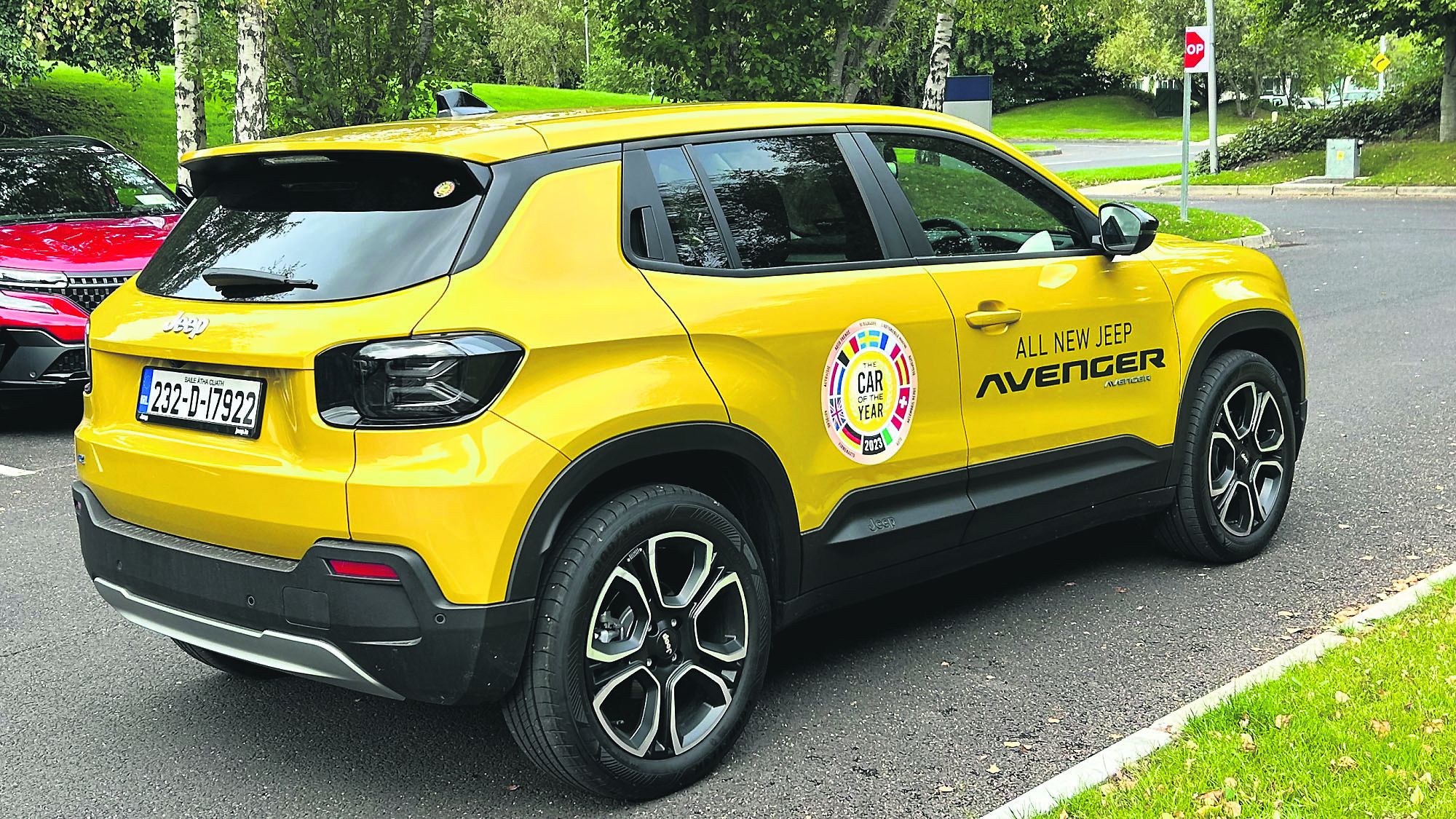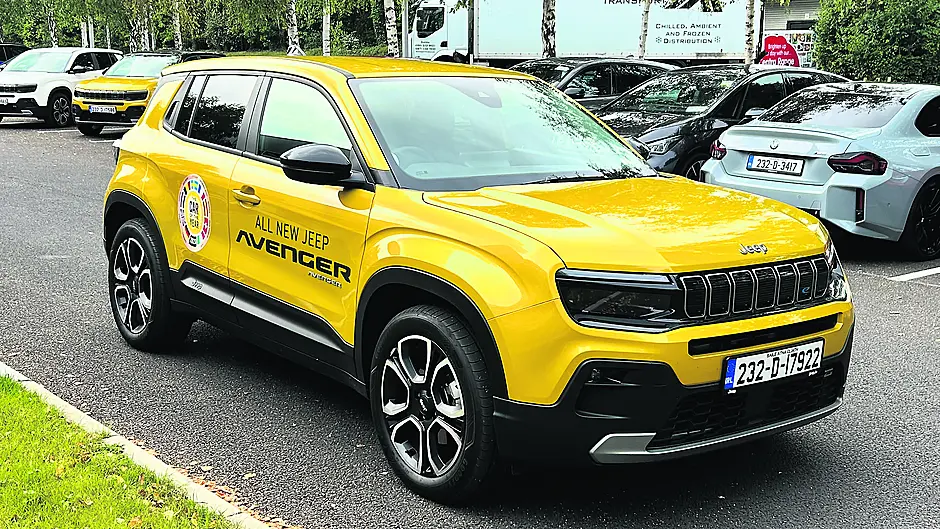BY BRIAN BYRNE
I WAS recently able to slot the Jeep Avenger EV into my review schedule after having given it a first drive appraisal last September. I was curious to see if my generally positive thoughts then would be retained through the longer experience. In short, they did. Any issues were kind of niggling.
The style of what is currently the smallest in the Jeep brand’s portfolio is attractive. Also practical, as the squared crossover rear treatment provides decent room for rear passengers in a B-segment car. The SUV-type cues are carried through the design, from an urbanised version of the Jeep trademark slotted grille to a body that seems to be riding high over the wheels, a perception accentuated by the black protector plastics all around — though it is actually lower than a VW T-Cross, for instance. The Avenger is wider than the Volkswagen, though, which adds to the strength sense the Jeep gives. Inside, the designers have favoured simplicity, both in dashboard design and with instrumentation. The high-mounted infotainment screen might seem a bit intrusive to some, though in fairness I didn’t find any real issue.
I particularly liked how the graphics on it, and also on the driver’s instrumentation, are designed. Clear information, quickly assimilated.

The climate controls are a row OF satisfying piano-style switches, and the manual radio volume control was particularly appreciated by my passenger. The switches on the steering wheel are all very clearly labelled, and familiar to anyone who has driven any of the current crop of Stellantis Group brands.
The unusual use of a horizontal row of buttons for transmission selection is on the face of it not an issue, but I found that when doing some tight space back-and-forward manoeuvring, their positioning was a bit of a pain. A rotary or lever selector is nicer and more intuitive. But the buttons work and you’ll quickly get used to them.
The width I mentioned does translate into a possibility of three people in the back, though the reality of a sub-compact hatchback is that it’s not size-appropriate for active family use.

There’s an adequate boot space for the segment, and this is a car that would be best used as a suburban-city runabout.
That last is not to say that it won’t hack a bit of mildly rugged terrain. Though not an AWD in any sense, there’s electronic control stuff that will keep it from bogging on slippy grass or muddy driveways.
The car is powered by a 156hp electric motor and a 54kWh battery, with a claimed range of between 389-404km. In reality that’s about 310km. Selecting Eco or Normal will trim back the available horsepower in favour of relative economy, but there’s an
adequate acceleration of 9.0s to 100km/h if you need to push it. Expect energy consumption of 16.4kWh/100km.

The car’s handling does have that flat feel of most electric vehicles, given the weight of the battery set low down. But it felt quite nice most of the time, despite being a small car weighing two tonnes, of which the battery is responsible for 339kg.
The Avenger is the first Jeep EV and initially that was all we were going to get in this market. But it was designed for combustion engine use in other markets, and now it seems they have added RHD versions on petrol, one of which I’m scheduled to drive in coming months. It will make an interesting comparison.

Meantime, yet another small EV is carving a space in a very competitive market. Numbers of the Avenger registered last month are in the scheme of things small, but nevertheless it is the brand’s biggest seller.








